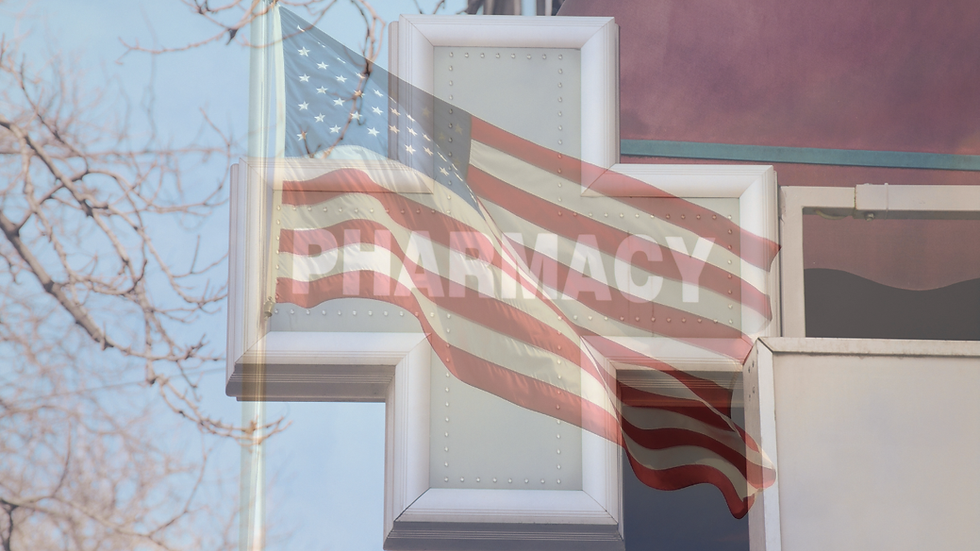Elon Musk, Bernie Sanders and Others Miss the Mark Over Pricey Insulin
- Nov 29, 2022
- 3 min read
Updated: Aug 1, 2024
Big Pharma has taken much of the heat for sky-high insulin prices, but scrutiny could soon shift to other companies grabbing a growing slice of spending
A tweet from a fake Eli Lilly LLY 0.14%increase; green up pointing triangle account earlier this month claiming insulin would be free was quickly corrected by the real company, but it was enough to spark the usual finger-wagging.
Sen. Bernie Sanders, who has raised his hand to take over as chair of the Senate committee overseeing healthcare, argued that prices have increased so dramatically because three drug companies control the market.
Elon Musk, the billionaire Tesla CEO who has his hands full trying to turn around Twitter, defended Eli Lilly, blaming higher prices on product advances. Left out of the debate are some poorly understood middlemen: Pharmacy-benefit managers, or PBMs, have captured a growing slice of America’s world-leading drug spending during the past decade. The spotlight could soon shift to them.
CVS(Caremark)Cigna(Evernorth/ExpressScripts)UnitedHealth(OptumRx)HumanaPharmacyMedImpactPrimeTherapeuticsOthers +Cash Pay0%2040Prime Therapeutics 4% More than 30 million Americans, or about 10% of the country, have diabetes, and more than seven million of them require daily insulin. The high cost, studies show, has forced more than one million Americans to ration their insulin—a dangerous action that could backfire not only on a diabetic’s health but on those who pay for their future care.
While the three largest manufacturers of insulin—Eli Lilly, Novo Nordisk and Sanofi—charge more for their products in the U.S. than they do elsewhere, their take of overall spending has been decreasing in recent years as the relative power of middlemen has grown. PBMs have steadily gained negotiating clout by consolidating and merging with large insurance companies. The three largest PBMs are owned by CVS Health Corp. CVS -0.84%decrease; red down pointing triangle (which owns insurer Aetna), UnitedHealth Group Inc. UNH -1.00%decrease; red down pointing triangle and Cigna Corp. CI -1.36%decrease; red down pointing triangle
That isn’t to say that pharma companies aren’t making much more than they did, say, 10 or 20 years ago, by raising the price of insulin while fending off generic competition through incremental patent protection. But the point Mr. Sanders and other critics miss is that increases in recent years have mostly been passed on to PBMs in the form of heavy discounts that are hidden from public view.
A recent study by University of Southern California scholars showed that, between 2014 and 2018, the share of a hypothetical $100 insulin expenditure accruing to manufacturers decreased by 33%. During that same period, total U.S. spending on insulin hasn’t budged, but the share of insulin expenditures retained by PBMs has increased by 155%.
That shift in who benefits from recent price increases is reflected in pharma companies’ financial statements. Eli Lilly, for instance, collected $4.57 billion in 2021 for its three insulin products—Humalog, Humulin and Basaglar—a drop from its $5 billion of revenue in 2020. For the first nine months of 2022, the company has collected $2.86 billion in revenue from those products.
“What’s happening in this market is that the middlemen are making more and more money,” said University of Southern California professor Neeraj Sood, one of the authors of the study who has previously done consulting work for drug companies.
Yet the drug-pricing provisions in the recently passed Inflation Reduction Act singularly focused on what manufacturers charge while ignoring other players that take a slice of profits farther down the chain. That might start to shift, representing a risk for managed-care companies like UnitedHealth, CVS and Cigna.
Targeting PBMs has increasingly become a bipartisan issue in recent years. Republican Sen. Chuck Grassley has been among those leading the way in Congress. Last year, for instance, he conducted a bipartisan investigation with Democratic Sen. Ron Wyden, which shed light on how rebates are pushing up the price of list prices for insulin.
And earlier this year, Mr. Grassley and Democratic Sen. Maria Cantwell introduced a bill to increase drug-pricing transparency. The impact on PBMs’ profits could be substantial, but the odds of such complicated legislation being enacted aren’t. PBMs’ much lower public profile, and the difficulty in crossing the partisan aisle these days even on smaller matters, make it unlikely there will be tough action soon.
“Betting on inaction in Washington,” says Larry Levitt, executive vice president at the Kaiser Family Foundation, “is always the safer way to go.”
WSJ Reporter: David Wainer at david.wainer@wsj.com




Comments